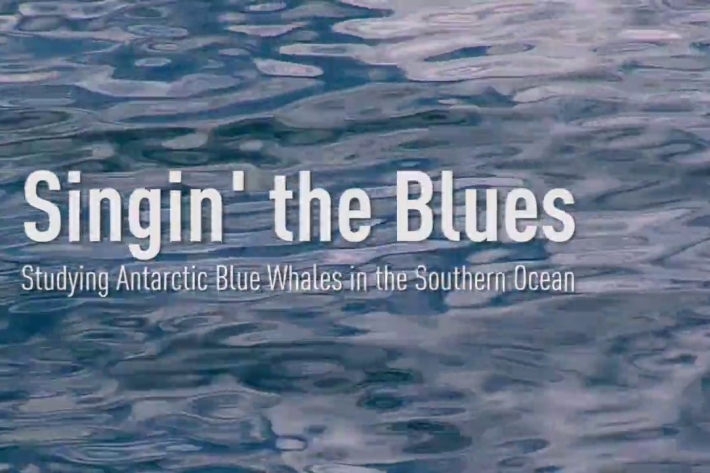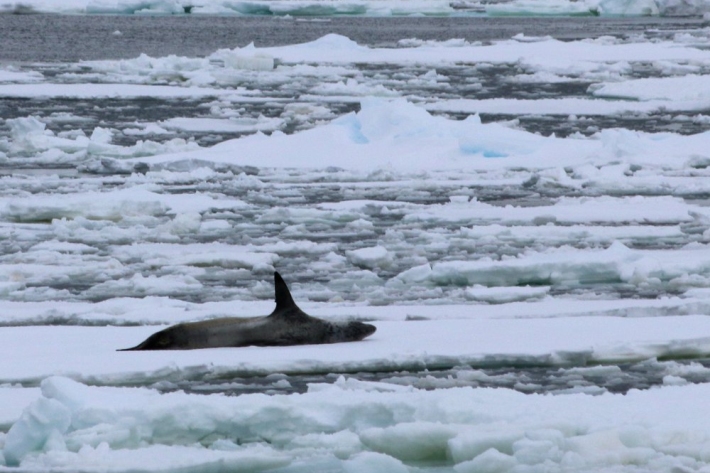-
BLOG: Sir Peter Blake Trust Ambassador Blake Hornblow - Enounters with Antarctica's animals
Blog26 February 2015It has been another amazing week here on the Tangaroa. On Saturday we saw Antarctica which was an absolutely breath-taking experience that I’ll remember for the rest of my life! -
BLOG: Sir Peter Blake Trust Ambassador Blake Hornblow - toothy research
Blog25 February 2015Today marks the halfway point in our journey and we have started the demersal trawling part of the voyage. Each day has been full-on with excitement and new things to learn and see. The highlight of the last few days was holding one of the biggest fish in the Southern Ocean in my arms - an Antarctic toothfish. -

Amazing photographs from Antarctica's Terra Nova Bay
Blog25 February 2015Favourable weather has provided excellent photographic conditions for NIWA's photographer Dave Allen, who has accompanied the 6 week voyage. -

NIWA's Hotspot Watch
Hotspot23 February 2015Weekly update to help media assess likelihood of extremely dry weather preceding a drought. Regions experiencing severely to extremely drier than normal soils conditions are deemed “hotspots”. -

BLOG: Sir Peter Blake Trust Ambassador Zac Penman - the final frontier
Blog23 February 2015Through the cloud a large dark shadow appears in the distance. I look at Blake and ask him, “Could that be it?” We both wait with anticipation, fizzing with excitement, and eyes fixed on the horizon. -

Explaining the blue whale research onboard the Tangaroa
Blog22 February 2015Scientists from the Australian Antarctic Division explain the blue whale research they are leading onboard the New Zealand-Australia Antarctic Ecosystems Voyage 2015. -

Singin' the Blues
Antarctic blue whales were severely depleted during the industrial whaling era, when the population declined to only a few hundred individuals. Scientists believe the Antarctic blue whale population has been recovering, albeit very slowly, since the 1960s. -

Lake sediments reveal frequency of Hawke’s Bay quakes
News article19 February 2015An international team of scientists has analysed 7000 years’ worth of lake-bottom mud from central Hawke’s Bay to work out how often the region might expect earthquakes. -

Critter of the Week: deep sea squid - Bathyteuthis abyssicola
The deepsea squid Bathyteuthis abyssicola Hoyle, 1885 has a circumpolar oceanic distribution, which means that it is commonly found right around the Southern Ocean, and in depths from 100-4200 m deep. -

BLOG: Sir Peter Blake Ambassador Zac Penman - day 18
Blog18 February 2015It’s now day 18 on board the RV Tangaroa and spirits are as high as ever. After seven days of amazing weather and a lot of successes with the blue whale work in the northern Ross Sea we have decided to put the last three days allocated to this scientific objective on hold for later in the trip, and to head south to start our third scientific objective which is the demersal trawl survey. -

Travelling with the blues
Blog16 February 2015NIWA voyage leader Dr Richard O’Driscoll updates the Tangaroa’s encounter with the planet’s largest living beings – the Antarctic blue whales – and discovers what’s on their menu.

